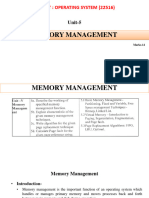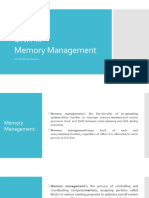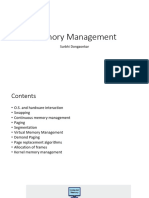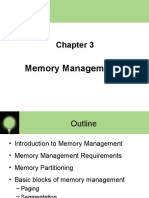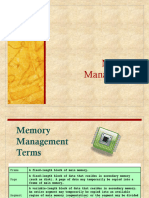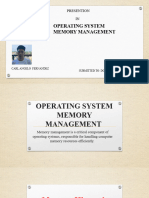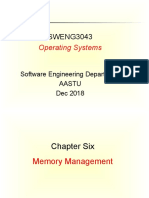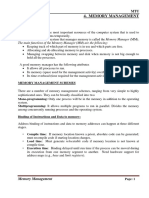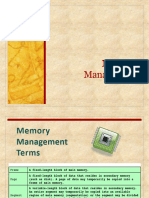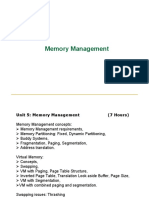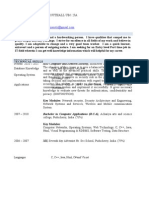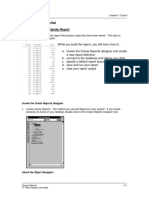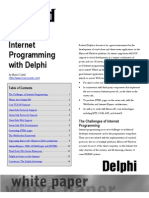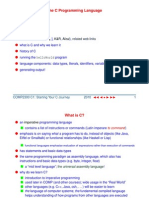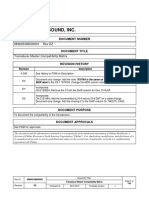0% found this document useful (0 votes)
34 views6 pagesCWMemory Management Techniques
The document provides a detailed explanation of various memory management techniques used by operating systems, including contiguous memory allocation, paging, segmentation, virtual memory, swapping, and compaction. Each technique is described with its advantages and disadvantages, highlighting how they manage memory allocation and fragmentation issues. The conclusion emphasizes the importance of understanding these methods for efficient program handling in computers with limited physical memory.
Uploaded by
conradsabastianmageziCopyright
© © All Rights Reserved
We take content rights seriously. If you suspect this is your content, claim it here.
Available Formats
Download as DOCX, PDF, TXT or read online on Scribd
0% found this document useful (0 votes)
34 views6 pagesCWMemory Management Techniques
The document provides a detailed explanation of various memory management techniques used by operating systems, including contiguous memory allocation, paging, segmentation, virtual memory, swapping, and compaction. Each technique is described with its advantages and disadvantages, highlighting how they manage memory allocation and fragmentation issues. The conclusion emphasizes the importance of understanding these methods for efficient program handling in computers with limited physical memory.
Uploaded by
conradsabastianmageziCopyright
© © All Rights Reserved
We take content rights seriously. If you suspect this is your content, claim it here.
Available Formats
Download as DOCX, PDF, TXT or read online on Scribd
/ 6











